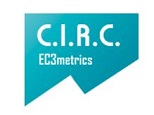Estructuras de la forma mentis escolástica en la obra abelardiana
DOI:
https://doi.org/10.53439/stdfyt30.15.2012.291-303Keywords:
Peter Abelard, scholastic method, quaestio scholasticsAbstract
Scholastic’s forma mentis is not some theology or arts master’s whim but the result of long philosophical and pedagogical processes. Even though analyzing every one of them would be extremely interesting, such a task exceeds by far the scope of this research. Consequently, we set to deal with some of the methodological aspects of Peter Abelard’s work since they, together with particular historic-cultural processes, give place to what would be known in the XIII century as scholastics. Indeed, the famous Magister Palatinus has been considered by many historians as one of the fathers of scholastics or, at least, as a proto-scholastic. Bearing in mind these considerations, the present research is grounded on two main axes. The first will try to establish practical and methodological foundations for the scholastic question in order to track the particular contributions that Abelard made in that matter, mainly in his works: Sic et non and Theologia Summi Bonni.

















